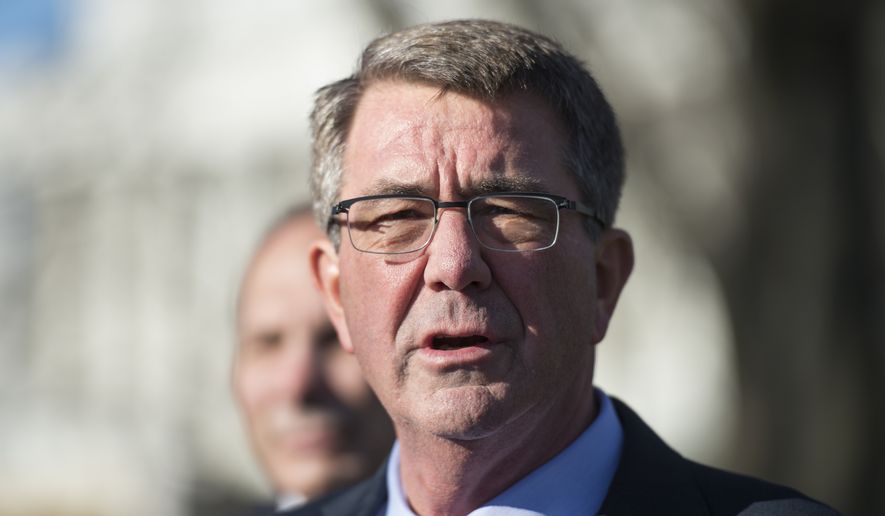Defense Secretary Ashton Carter said Tuesday he plans to reduce the number of generals and admirals to counter a “top-heavy” command structure.
Shrinking the top brass is one of a number of ideas for updating the sprawling Defense Department command structure as contained in the 30-year-old Goldwater-Nichols Act. Mr. Carter said there are too many four-star billets.
“In the coming weeks the Defense Department will look to simplify and improve command and control where the number of four-star positions have made headquarters either top-heavy or less efficient than they could be,” he said at the Center for Strategic and International Studies (CSIS) in Washington.
“The military is based on rank hierarchy, where juniors are subordinate in rank to their seniors,” he said. “This is true from the platoon to the corps level, but it gets complicated at some of our combatant and component command headquarters, where we have a deep bench of extremely talented senior leaders. So where we see potential to be more efficient and effective, billets currently filled by four-star generals and admirals will be filled by three-stars in the future.”
Mr. Carter is, however, sticking with the current lineup of Combatant Commands, headquarters such as Central Command, European Command and Pacific Command, which do the war planning and fight the wars.
For example, Central Command now heads the war against the Islamic State and the Taliban in Afghanistan. Pacific Command oversees countermeasures to China’s growing aggression.
Some analysts had proposed consolidating commands, such as European and Africa commands. Africa Command was created in the George W. Bush administration to counter a growing Islamic threat on the continent.
Mr. Carter rejected that idea. Combining the two, he said, would be “actions that would run contrary to why we made them separate, because of their distinct areas of emphasis and increasing demands on our forces. And indeed those demands have only further increased in recent years, with each command growing busier.”
Mr. Carter also said he plans to keep the chairman of the Joint Chiefs of Staff, currently Marine Gen. Joseph Dunford, out of the wartime chain of command, from the president to the defense secretary to field commanders.
Goldwater-Nichols institutes that arrangement to preserve the chairman as an objective voice and the chief military adviser to the president and the defense secretary.
But chairman and the service chiefs, who are mostly assigned the task of maintaining combat readiness of each branch, will gain a larger voice in war planning and weapons acquisition.
“In an increasingly complex security environment, and with a decision chain that cuts across the combatant commands only at the level of the secretary of defense, we are not postured to be as agile as we could be,” Mr. Carter said.
The thrust of Goldwater-Nichols, a command structure born out of the failed Desert One operation to rescue Americans in Iran, will remain intact.
“I’m deeply proud of how our people have operated in Iraq and Afghanistan over the last 15 years,” Mr. Carter said. “So the updates we make now must not undo the many positive benefits that Goldwater-Nichols has had for DoD. Instead, they must build on them.”
Congress will have its own ideas on legislation this year to change the department’s organizational structure.
• Rowan Scarborough can be reached at rscarborough@washingtontimes.com.




Please read our comment policy before commenting.